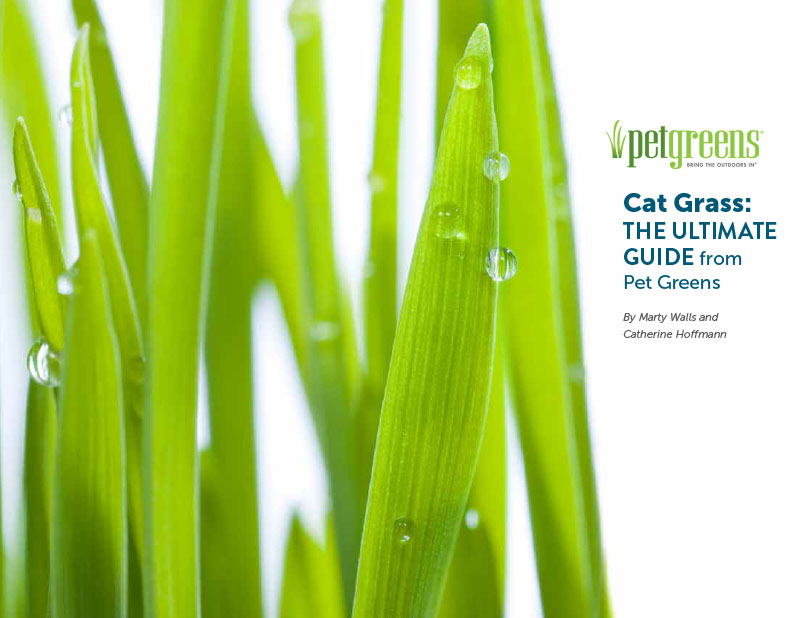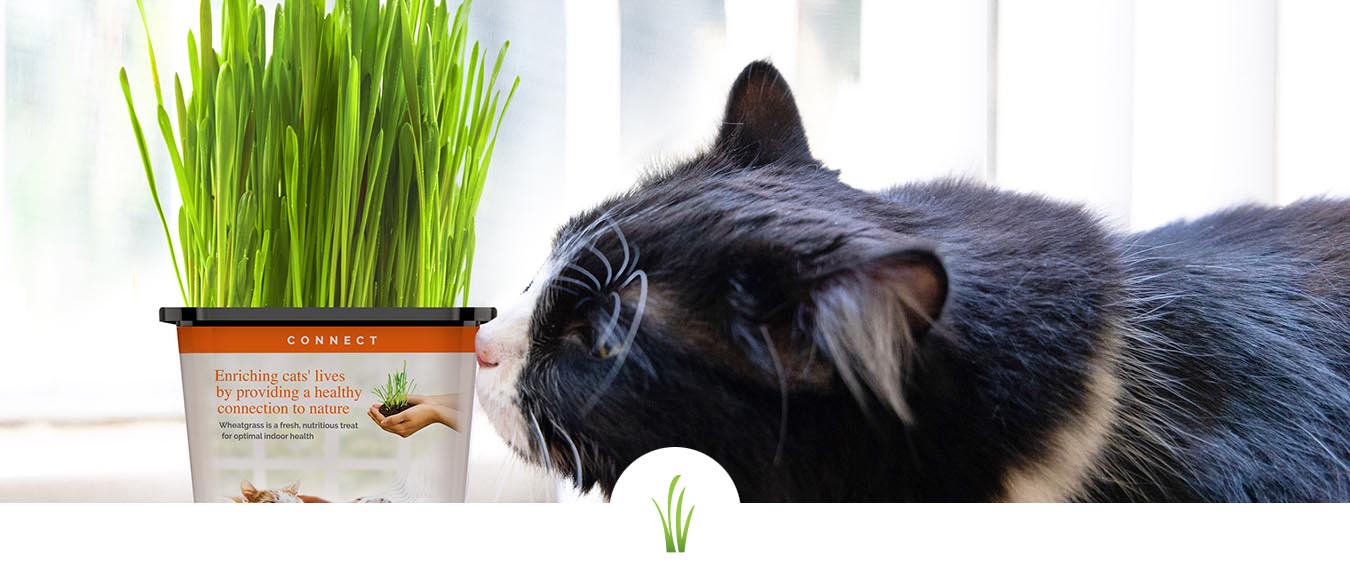
Fun fact: Cat grass is not really grass at all!
What we humans have come to refer to as “cat grass” is completely unrelated to the grass we grow outdoors for our lawns. Instead, it’s the sprouts from cereal grass seeds, usually wheat, oat, rye or barley.
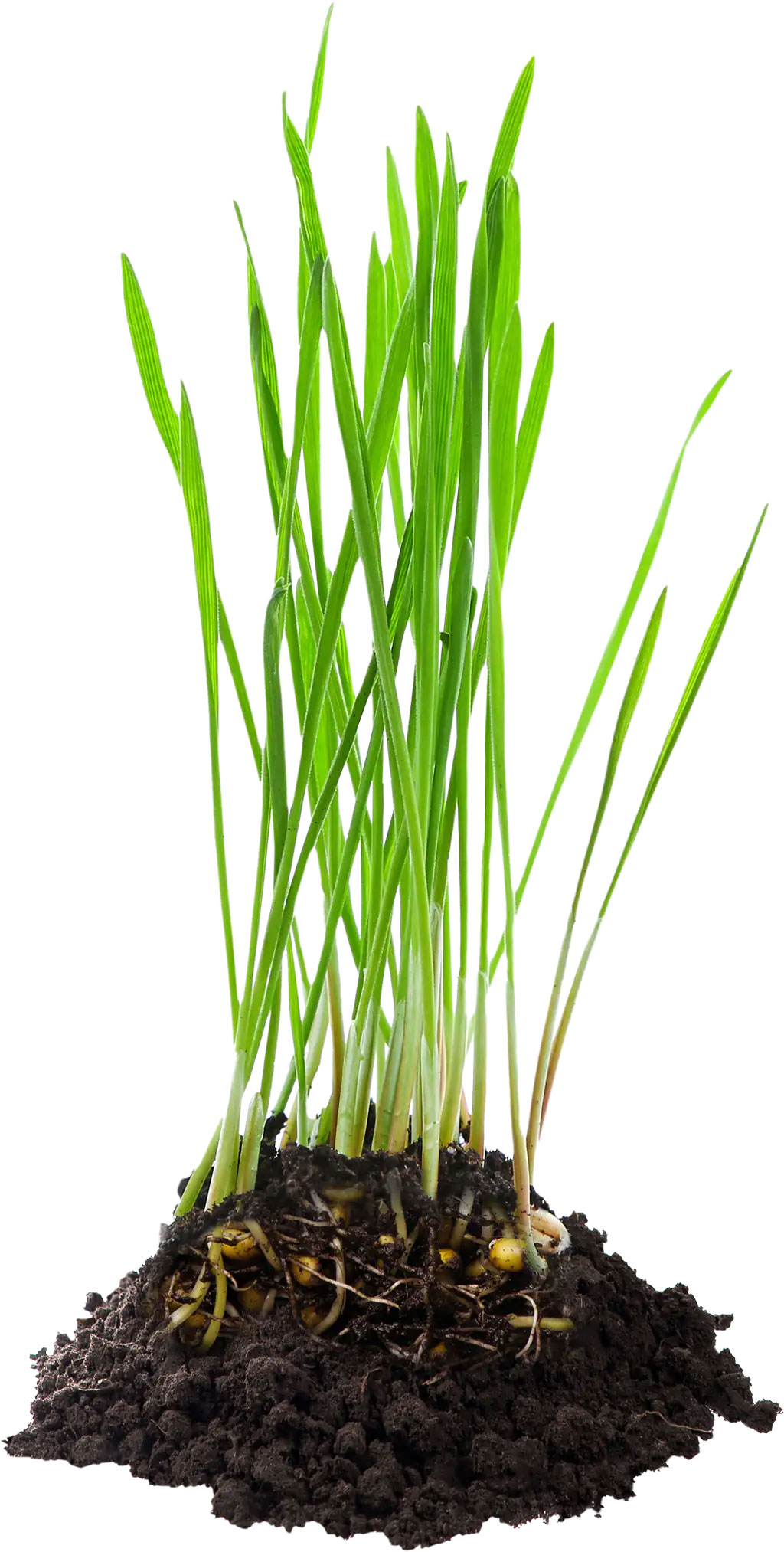
When planted close together, cereal grass seeds sprout into the dense, lush indoor plant known as cat grass.
Do indoor cats need cat grass?
Statistics show that most of us who have cat companions keep them indoors these days, for several good reasons. Indoor cats are:
- Much less likely to pick up fleas and other parasites, including viruses
- Not preyed-upon by coyotes or other urban wildlife
- Safe from cars!
- Safe from other cats in the neighborhood
On top of all that they stay much cleaner indoors, which makes them much more welcome on the furniture or in your bed – where they will most likely spend a large part of their time. This fact does not mean they won’t still groom themselves diligently, and that’s where cat grass becomes such an important part of their lives.
Aside from basic hygiene, cat grooming serves multiple functions:
- Helps cats cool off
- Neutralizes their scent
- Removes debris and parasites
- It strengthens their bond with other cats (and with their humans, if you’re lucky!)
For more information about cat grooming, check out this short video from Animal Wised
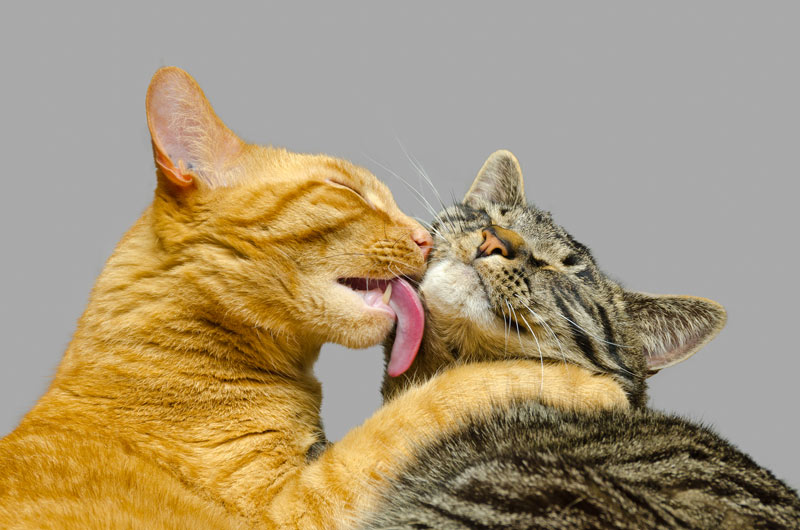
As you may have guessed, the result of all this grooming can be a build-up of fur in the digestive tract. Sometimes the fur just naturally passes through and isn’t an issue, but it can also compress into a mass that is too large to easily move through their system. These charming little globs are known as hairballs.
Can cat grass help relieve hairballs?
Cat Grass is an excellent natural hairball remedy because it provides gentle and effective fiber, which is something that is usually missing from the largely carnivorous diet that is normal and necessary for cats. In the wild, the big cats get some of that essential fiber from the stomachs of their prey, many of which are grazers. Yuck, right? But even with this, cats in the wild can sometimes be seen eating wild grasses, and these can be pretty harsh.
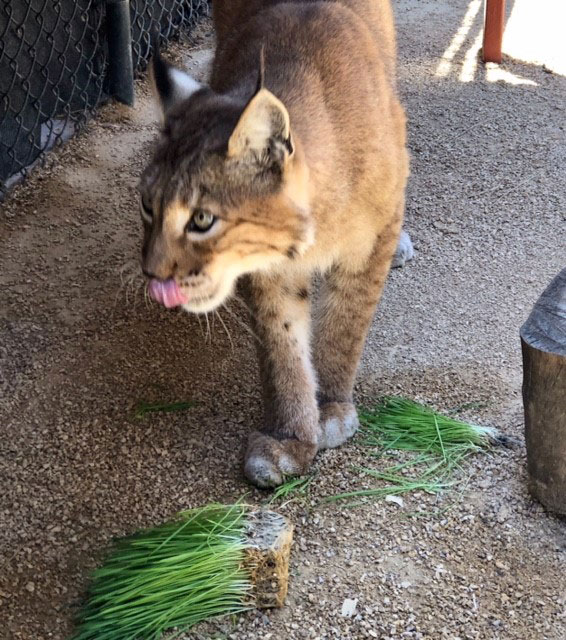
Some types of wild grass (even lawn grass) have finely serrated blades that can stick in cats’ throats. Cat grass has smooth, softer blades and is much more pleasant to eat – even the big cats can appreciate the difference!
What other benefits does cat grass have?
Aside from acting as a hairball remedy, cat grass provides life enrichment for indoor cats. Having their own, fresh indoor garden helps to satisfy that essential connection to Nature most indoor cats instinctively crave. The craving for fresh greens can often lead indoor cats to chew on potentially harmful houseplants or cut flowers. In fact, many popular houseplants are toxic to cats and other animals. Here’s a list of plants that should be strictly avoided if you have indoor cats and other pets.
For more on this subject, see our post “Are Your Plants Safe for Your Pet?” I love my cats, but I also like having plants indoors. Keeping a pot or two of Cat Grass accessible is a great way to keep both my cats and my plants happy and thriving!
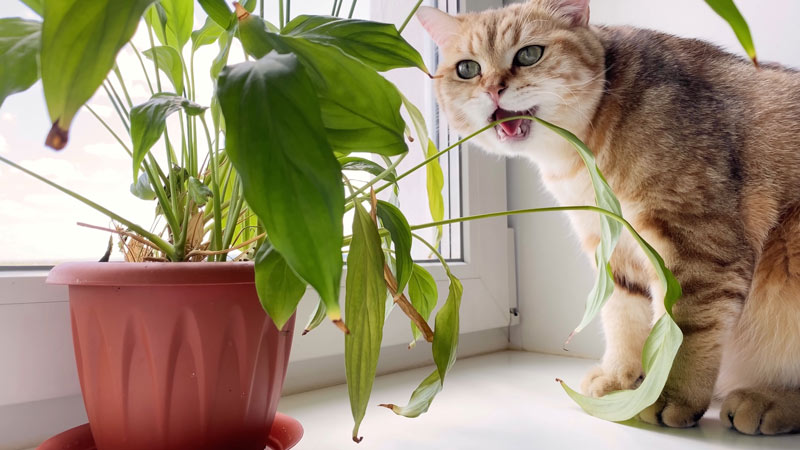
Can cats eat cat grass every day?
Many cats enjoy cat grass daily as part of a balanced diet. The only precaution we recommend is to take note of how much cat grass your cat eats when you first introduce it to them. It rarely happens, but once in a while a cat will get so excited about having delicious, juicy greens to munch on that they overdo it! I think we all know the effects of too much fiber on the digestive system, especially when one is not used to it. Toxicity is not an issue, but overeating could cause some stomach upset and loose stool.
Does cat grass make cats high?
I’m not sure why this happens, but some online articles talk about “cat grass” and “catnip” as if they are the same thing, and maybe that’s where this misunderstanding originates. But the answer is no, cat grass will not get your cat “high.”
What is the best grass for cats?
At Pet Greens, we believe wheatgrass is the best all-around grass for cats to eat, which is why our pre-grown live Cat Grass is 100% Certified Organic wheatgrass. The healthful properties of wheatgrass are unsurpassed by the other cereal grasses, including having the highest concentration of chlorophyll. although all share many of the same benefits.
Oat grass, rye grass and barley grass are all sprouts of those cereal grass seeds, and share many of the nutritional properties of wheatgrass. These grasses are often grown and sold as cat grass, and some cats prefer one over another. That’s why we created two kinds of cat Grass Self-Grow Kits: Garden is 100% wheatgrass, and Medley is a blend of oat, rye and barley grasses. Variety is the spice of life, after all!
Can other pets eat cat grass?
Many dog people will see their pup chomping on lawn grass a short while before vomiting, but they know this is usually not cause for concern. Grasses, and even cat grass, can act as a natural emetic, which animals will instinctively use to soothe an upset stomach. More often, however, dogs and other pets are drawn to the sweet, juicy flavor of the tender blades. They also appreciate having fresh greens in their environment – cat grass becomes their own personal indoor garden. Learn more on why dogs eat grass in this blog.
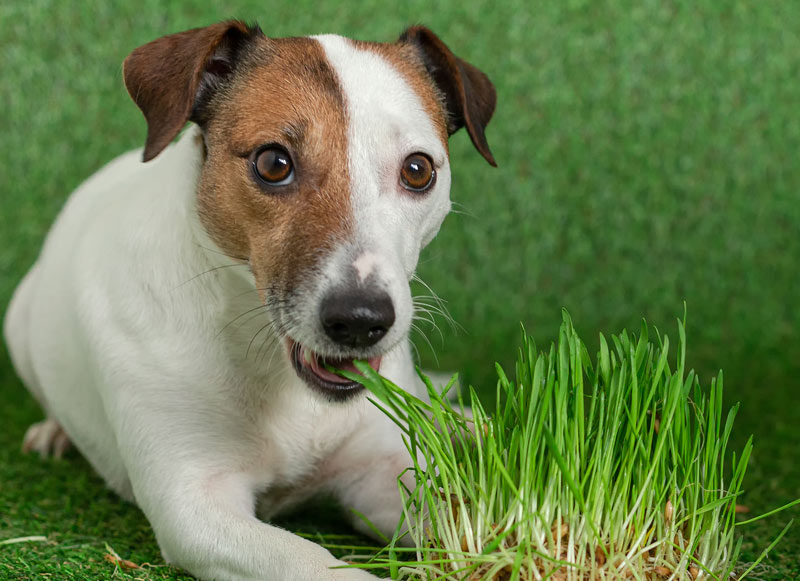
Many other animals benefit from the fiber and nutrients in cat grass, most commonly:
- Dogs
- Birds
- Reptiles
- Rabbits
- Guinea Pigs
- Hamsters
How long does cat grass last?
A pot of cat grass will typically last about two to three weeks. Think of it more like fresh produce than as a plant – and if treated as such it should stay fresh and healthy for several weeks. Refrigeration is very helpful as it greatly slows the growth of the blades, so we recommend rotating 2 or more pots of grass in the fridge when not in use. Proper watering (about twice a week) and sufficient light (strong, indirect sunlight is ideal) is all it needs to maintain its lush, green growth. If the tips of the blades start to look a bit weathered (sharp kitty teeth will do that!) we recommend trimming the blades back to about a 4” length.
Is cat grass good for your cat?
Cat grass, which is predominantly wheatgrass but can include the other cereal grasses mentioned above, is packed with nutrients that contribute to the health of pets in so many ways! Some of the main healthful components are:
- Chlorophyll, the “green blood” of plants
- Antioxidant vitamin A (as Beta Carotene), Vitamin C and Vitamin E
- Minerals such as magnesium, iron and calcium
- Protein
Where can I buy fresh cat grass?
There is a very good chance your local pet store carries our fresh, pre-grown Live Cat Grass, usually located near the check-out counters. We ship fresh cat grass to all Petco, PetSmart, and Pet Supplies Plus stores every week, as well as to hundreds of other small-chain and independently owned pet stores. Check out our store locator to find a store near you
For those who prefer to shop online, pre-grown Live Cat Grass is now available from both Amazon and Petco. Many other online stores also carry our Pet Greens Self-Grow-Kits – a great way to make sure you always have cat grass available for your pets, and a super easy and fun garden project for kids!
